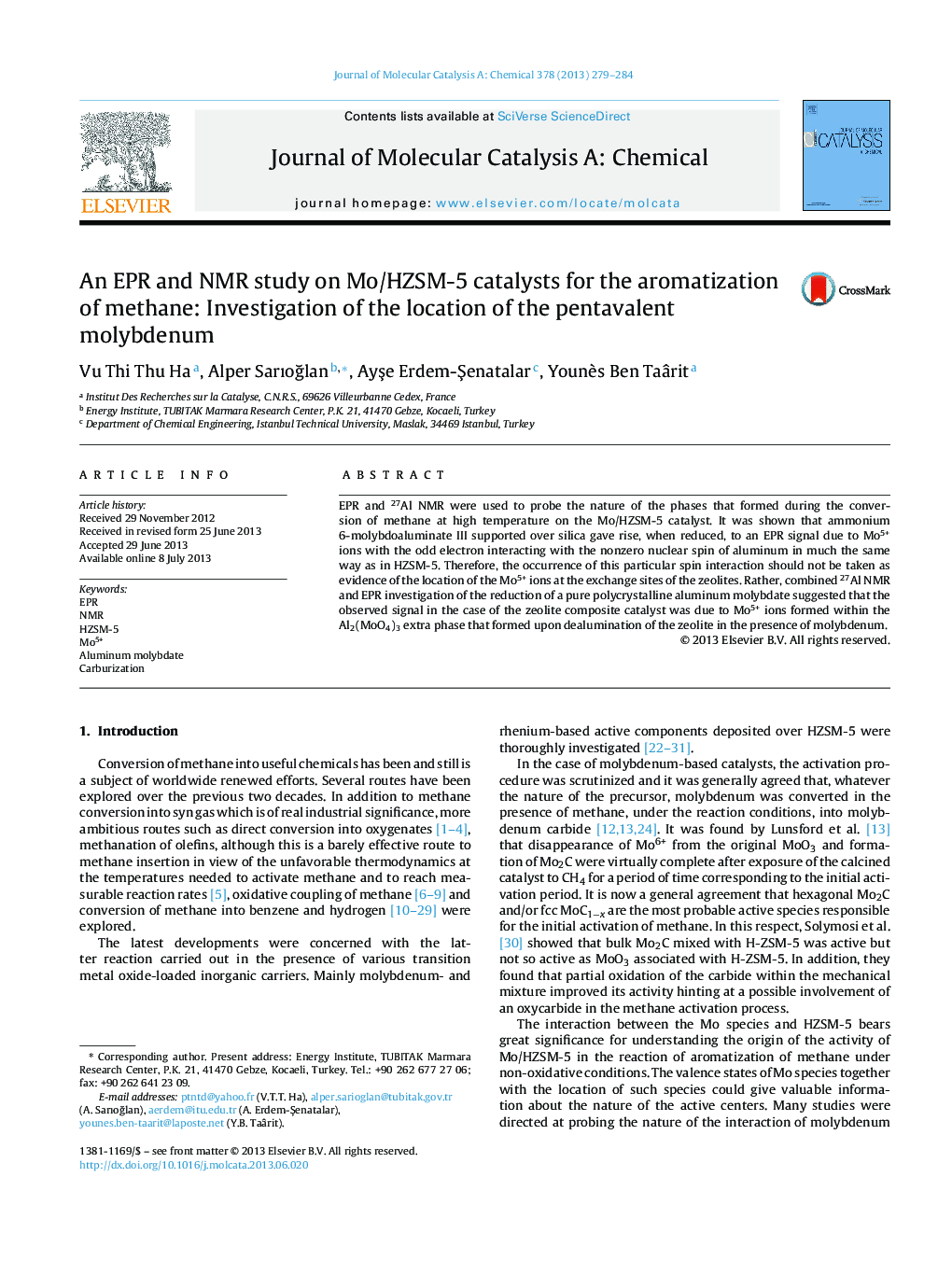| کد مقاله | کد نشریه | سال انتشار | مقاله انگلیسی | نسخه تمام متن |
|---|---|---|---|---|
| 65794 | 48403 | 2013 | 6 صفحه PDF | دانلود رایگان |

• The moderate reduction of the aluminate giving rise to isolated Mo5+ ions.
• Disruption of the original lattice in the vicinity of Mo5+ with severe reduction.
• A sizeable fraction of the molybdenum is present as aluminum molybdate.
• Aluminum molybdate hosting the pentavalent paramagnetic Mo ions.
• These ions are probes to monitor the changes occurring within the catalyst.
EPR and 27Al NMR were used to probe the nature of the phases that formed during the conversion of methane at high temperature on the Mo/HZSM-5 catalyst. It was shown that ammonium 6-molybdoaluminate III supported over silica gave rise, when reduced, to an EPR signal due to Mo5+ ions with the odd electron interacting with the nonzero nuclear spin of aluminum in much the same way as in HZSM-5. Therefore, the occurrence of this particular spin interaction should not be taken as evidence of the location of the Mo5+ ions at the exchange sites of the zeolites. Rather, combined 27Al NMR and EPR investigation of the reduction of a pure polycrystalline aluminum molybdate suggested that the observed signal in the case of the zeolite composite catalyst was due to Mo5+ ions formed within the Al2(MoO4)3 extra phase that formed upon dealumination of the zeolite in the presence of molybdenum.
Figure optionsDownload high-quality image (116 K)Download as PowerPoint slide
Journal: Journal of Molecular Catalysis A: Chemical - Volume 378, 1 November 2013, Pages 279–284